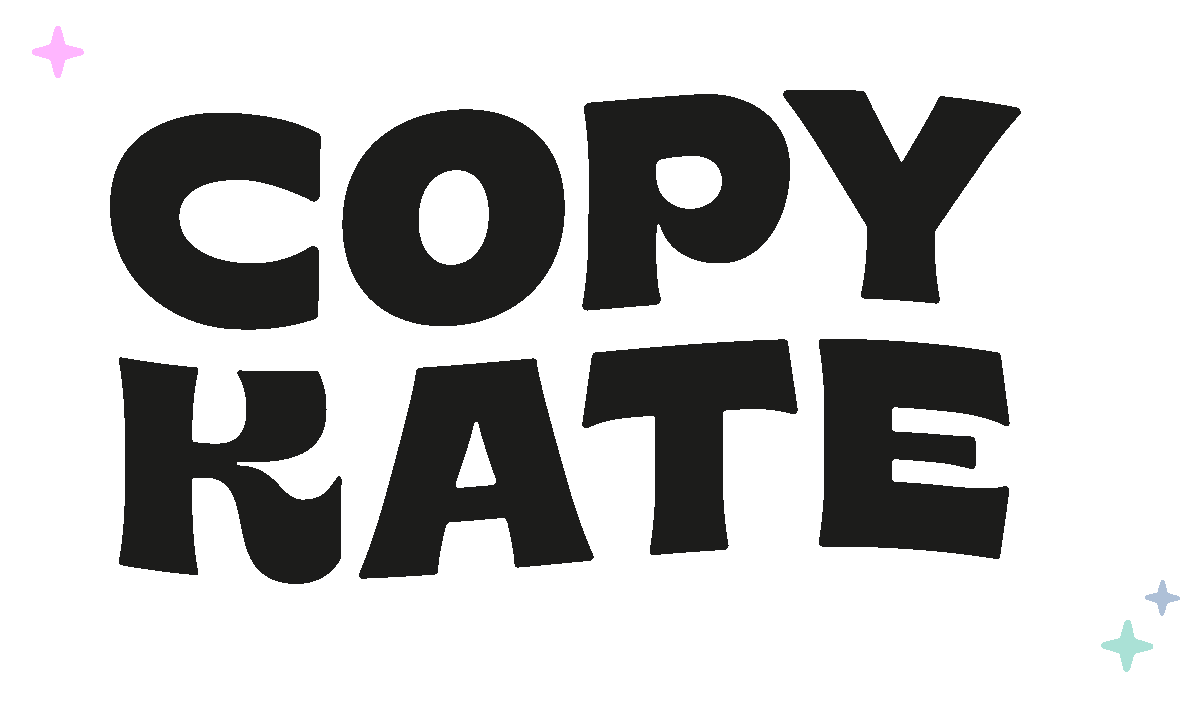80% of people do not read past the headline…👀
Let that statistic sink in for a moment: 8 out of 10 people will read a headline, but only 2 out of 10 will go on to read the rest.
Yep, your headline does some serious heavy lifting.
Anyone who's worked with me, sat in on one of my workshops, or spent even five minutes scrolling through my content knows this: I’m obsessed with headlines. Not in a "throw a catchy phrase together and call it a day" way, but in a "this-is-literally-the-most-important-part-of-your-copy" way.
Because it is.
Your headline, whether it’s a blog title, the first two lines of your Instagram caption, or your email subject line, is your first (and sometimes only) shot at grabbing your reader’s attention. It’s the make-or-break moment. Nail it, and you draw them in. Miss the mark, and they scroll right past 😬.
Why headlines matter more than ever
In 2025, we are living in a world of noise. Notifications, ads, emails, reels, posts, DMs. Everyone is competing for attention, and your audience is more selective than ever about where they put theirs.
A good headline doesn’t just catch the eye, it gives people a reason to care. And here’s the kicker: if your headline doesn’t do that, nothing else you’ve written even gets seen.
So no pressure, right? 😅
Let’s break down what makes headlines so important, and more importantly, how to write ones that actually work.
The real purpose of a headline
A headline has one job: to make people want to read more. That’s it.
But the best headlines do that by:
Creating curiosity
Offering value
Tapping into a specific need or desire
Establishing relevance
Building trust (even in just a few words)
It’s not about being clever for the sake of it. It’s about being compelling. Your headline is your first impression. And you don’t get a second one.
What makes a headline magnetic?
Here’s the thing: you don’t need to be a genius wordsmith to write a great headline. But you do need to understand what makes people tick.
Let’s look at a few key principles behind headlines that grab attention and hold it.
Avoid Clickbait. Always.
Clickbait might get clicks, but it won’t get trust or conversions. If your headline promises something you can’t deliver, you’ll see high bounce rates and lose credibility fast. Instead, focus on clarity and honesty.
Ask yourself:
Does my headline reflect what’s actually in the content?
Am I overhyping or underdelivering?
Your headline should set clear expectations, and your content should then meet or exceed them.
Start With Your Customer’s Perspective
The best headlines aren’t about you, they’re about your reader.
What are they struggling with? What are they curious about? What do they want more of, or less of, in their lives? When you understand your audience, you can write headlines that speak directly to their needs.
Examples:
"How to save time on [X] without sacrificing quality"
"Struggling with [problem]? Here’s a simple fix”
Your headline should immediately signal: "This is for you."
Make the Value Obvious
People are constantly assessing: "What’s in it for me?"
Your headline should answer that question. Whether it’s practical advice, a fresh perspective, or a solution to a problem, make sure your headline conveys clear value.
Example:
"7 battle-tested strategies to get your email out of the promo folder”
Remember, value doesn’t always mean a listicle or guide; it just means relevance.
Keep It Clear and Concise
Clarity beats cleverness every time.
Avoid vague, abstract language or industry jargon. Your headline should make sense to someone who knows nothing about your brand.
Use simple, direct language. If your headline needs to be read twice, it’s too complicated.
Formats that work (when used well)
Certain headline formats tend to perform consistently well, not because they’re formulas, but because they’re grounded in how people process information.
Here are a few formats to try:
Question Headlines
Questions engage curiosity.
"Are you making these common copywriting mistakes?"
"What’s stopping your content from converting?"
Make sure the question is one your audience wants answered.
How-To hEADLINES
People love a step-by-step.
"How to create magnetic headlines in just minutes"
"How to build a brand voice that stands out "
“How to” promises actionable value, and that’s what readers are looking for.
Lists + Numbers HEADLINES
Numbers suggest clear, digestible info.
"5 quick fixes for better ‘open me’ email subject lines"
"10 ways to make your copy more digestible"
Word of warning: make sure the content delivers on the number.
Bold Statemen HEADLINES
Strong, confident claims catch attention.
"Why most marketing fails, and how to fix it"
"The only copywriting rule that actually matters"
Back it up with substance, not just flair.
The psychology behind headlines
Headlines work because they tap into basic human psychology:
Curiosity – We hate not knowing something. A well-crafted headline teases just enough.
FOMO– "You’re missing this" triggers action.
Desire for simplicity, a.k.a an easier life – Clear, actionable headlines promise quick wins or clarity.
Relevance – We pay attention to what feels personal and timely.
Good headlines don’t manipulate; they align with how people naturally think and feel.
The Takeaway
Don’t treat your headlines as an afterthought. Spend as much time crafting a strong headline as you do on the rest of your content. Because if no one reads past the headline, nothing else really matters.
And if writing headlines feels like a struggle? Get in touch & let’s chat about how I can help.
